10 Spring Vegetables and How to Use Them
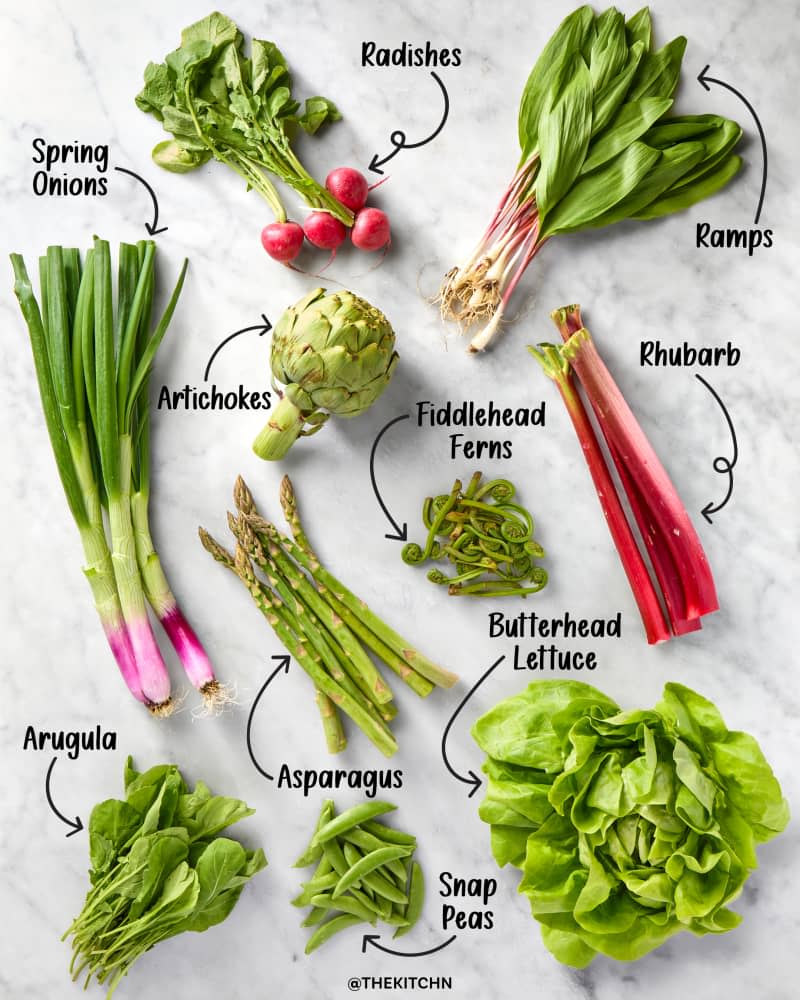
Spring is a great time for vegetables. As we emerge from the gloomy frost of winter, it’s the perfect season to incorporate some of the tender green vegetables that are just starting to be harvested. Spring is when asparagus, peas, and foraged veg with short availability like ramps and fiddlehead ferns, start showing up at local grocery stores. It’s also the start of my favorite time of year: farmers market season. After spending months cooking heavy stews and braises, I start incorporating lighter fare like veg-heavy salads in spring, and I might even bust out the grill.
Before summer is in full swing and it’s all about plump tomatoes, ripe peaches, and the sweetest corn we can get our hands on, let’s appreciate the bounty that spring has to offer. Here we break down 10 of the freshest spring vegetables and how to use them.
Table of Contents
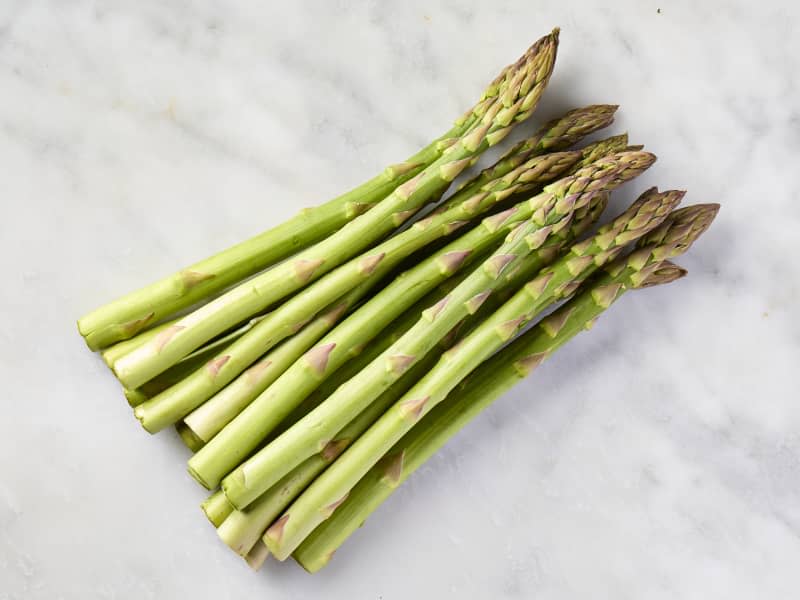
Asparagus
Asparagus stalks are the aboveground shoots of an underground “crown” that can grow asparagus for up to 20 years. Asparagus starts out green and tender, with the best of its flavor near the tip. Springtime is the best season for new, young asparagus that has just sprouted, which is the most tender and flavorful.
In addition to the green variety, you may also see purple asparagus (which turns green when cooked) and white asparagus — which is grown without sunlight. Look for asparagus with plump, straight stems. Avoid wrinkly stems or dry, split, overly woody ends. Stems can be thick (good for grilling or roasting), or thin (great raw, in a salad, or sauteed.) Asparagus is extremely versatile and can be prepared just about any way you can think of, so get creative!
Storage Tip: Wrap asparagus stalks in a damp paper towel and seal them in a zip-top plastic bag to keep them fresh for up to two weeks. (Trust me, we did the research.)
Best for: soups, pastas, grilling, roasting
Asparagus Recipes:
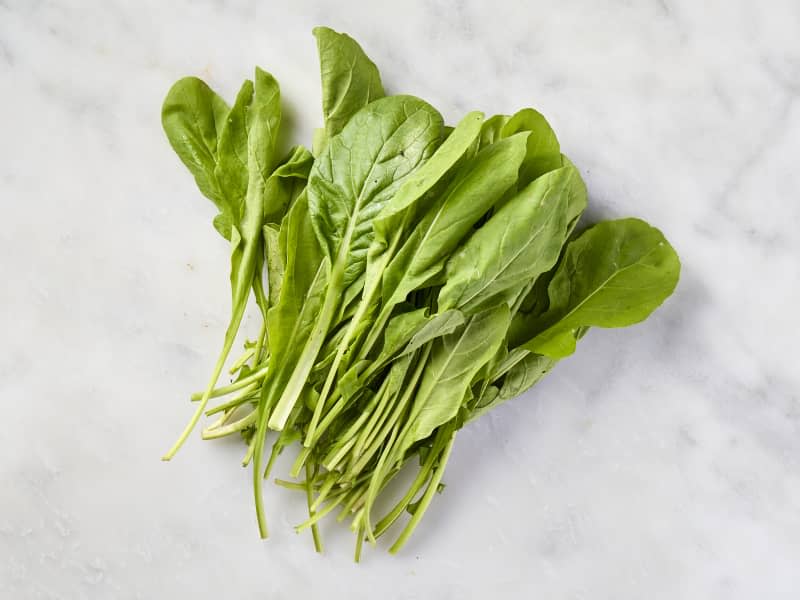
Arugula
Arugula is a leafy green with a bit of bite. Its dark green leaves have a bold, peppery flavor. It stands up well on its own as the base of a salad, but can also be mixed with milder lettuces. Try it instead of lettuce on a sandwich or on top of a pizza. Arugula also stands up well to cooking and is a great addition to pastas or sautés. You can find arugula year-round, but early spring is the best time to find them at the farmers market.
Storage Tip: Wash greens and store them right in your salad spinner to keep them fresh for a week or more!
Best for: salads, grain bowls, pasta
Arugula Recipes:
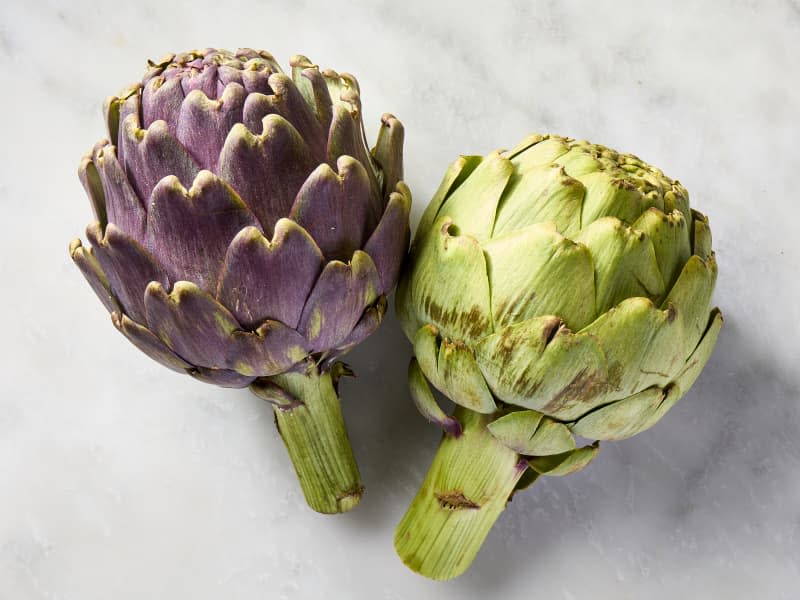
Artichokes
Did you know artichokes are actually flower buds? They are harvested before reaching maturity, but despite being young can get quite large. Most of the artichoke — including the exterior, most of the leaves, and the choke in the center — are inedible, leaving us with the tender hearts and bottom part of the leaves to use in cooking.
When choosing fresh artichokes, look for tightly bound leaves (splayed out leaves are a sign the artichoke is past its prime) and avoid any with brown spots. While fresh artichokes require a bit more prep than other vegetables, they’re very flavorful and versatile.
Storage Tip: To keep artichokes fresh for up to five days, sprinkle them with a little water and store them in the refrigerator in a zip-top plastic bag.
Best for: grilling, roasting, braising, frying, salads, pasta
Artichoke Recipes:
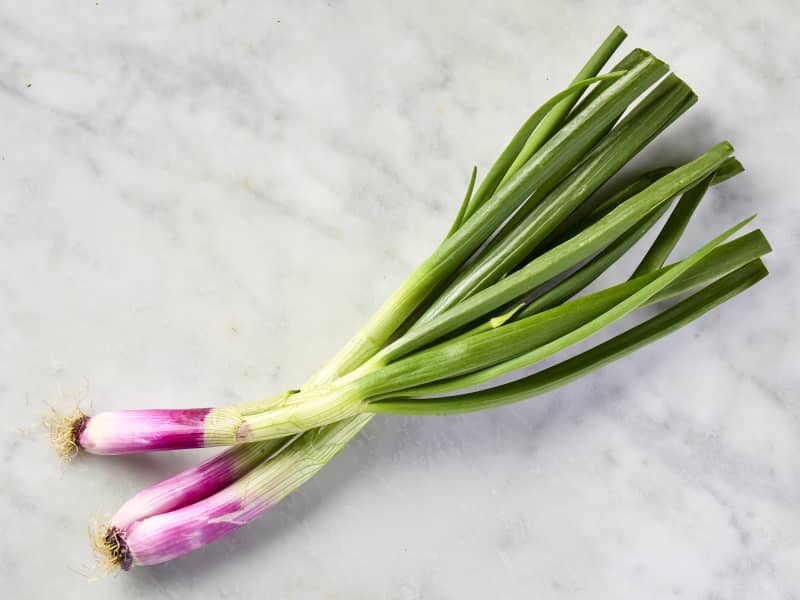
Spring Onions
Spring onions are essentially the middle stage of bulb onions. They’re slightly more mature than very young, narrow shoots with no bulb at the end — those are called scallions or green onions; but they’re younger than fully mature onions. Spring onions look similar to scallions, but with a small bulb at the end.
They can be white or red, and they typically have a milder flavor than mature onions with more intense greens than scallions. They can be used the same way you would onions or scallions, but be mindful of the difference in flavor intensity when swapping.
Storage Tip: Store spring onions wrapped in a damp paper towel in a zip-top plastic bag or standing up in a jar with water (like a bouquet of flowers) to keep them fresh.
Best for: Grilling, roasting, sautéing, soups, subbing for scallions
Spring Onion Recipes:
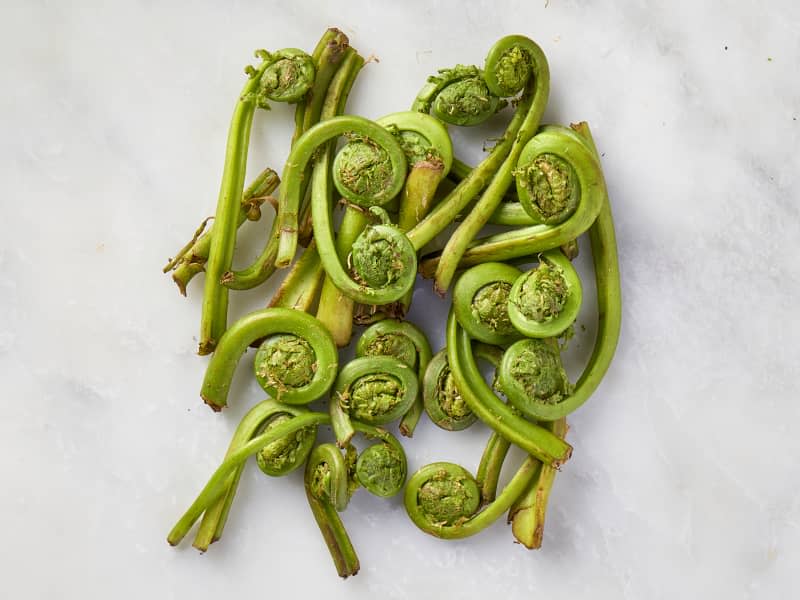
Fiddlehead Ferns
Fiddleheads are the young shoots of the ostrich fern. They are only harvested during a short window in spring when the ferns begin to sprout. Since they’re primarily a foraged vegetable, you’re most likely to find them at your local farmers market, though some foragers do sell to grocery stores. They don’t require much in the way of preparation other than a good wash in a bowl of cool water to loosen dirt, the same way you would wash leeks. Fiddleheads contain a toxin that can cause food poisoning if consumed raw. If you’re planning to use them in a salad or another cold preparation, blanch them first.
Fiddleheads have a grassy, nutty flavor and can be used in the same way you might other spring vegetables like snap peas or asparagus. Look for fiddleheads that are tightly curled and avoid any with brown spots. Try swapping in fiddleheads in recipes that call for green beans, fava beans, or other spring vegetables. They’re great as a quick sautéed side dish, stirred into a grain bowl or risotto, or tossed with pasta.
Storage Tip: Fiddleheads can be stored for a few days wrapped tightly in plastic in the refrigerator. They lose their crispness quickly though, so plan to cook them as soon as possible after bringing them home.
Best for: Sautéing, frying, pasta, grain bowls
Fiddlehead Recipes:
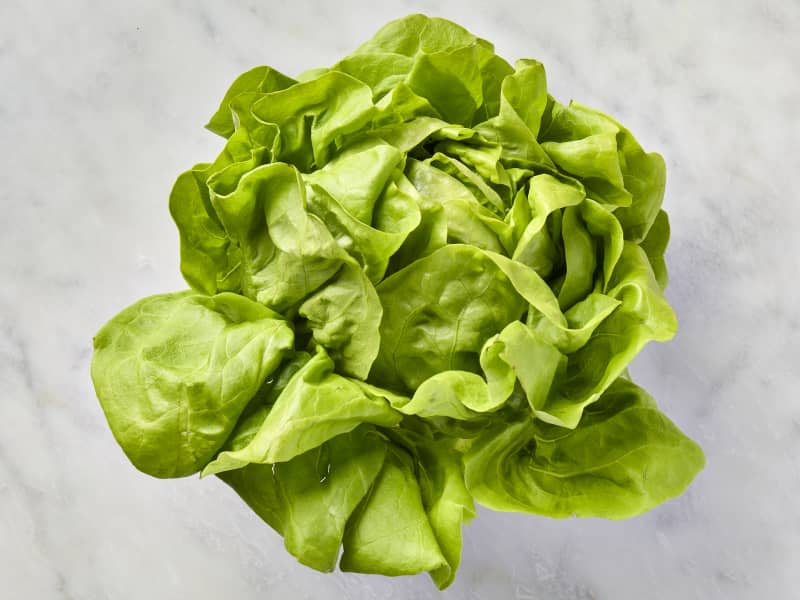
Butterhead Lettuce
Butterhead lettuce is aptly named, since the leaves of the bulbous lettuce heads can be very soft and sweet, almost buttery in texture. Two varieties are the most well-known: Boston is a slightly larger and floppier-leafed variety, while Bibb is the smaller and more compact of the two. These are the whole lettuce heads often grown hydroponically and sold in individual clamshells, though in spring you can often find them at your local farmers market as well. Of all the salad greens available, butterhead lettuce is particularly versatile because of its mild flavor and widely shaped leaves. It makes a great base for simple salads, or swap it in for romaine on a sandwich or burger.
Storage Tip: Lettuces can be stored in a container with paper towels, which will keep them fresh for up to 10 days.
Best for: Salads, lettuce wraps
Butterhead Lettuce Recipes:
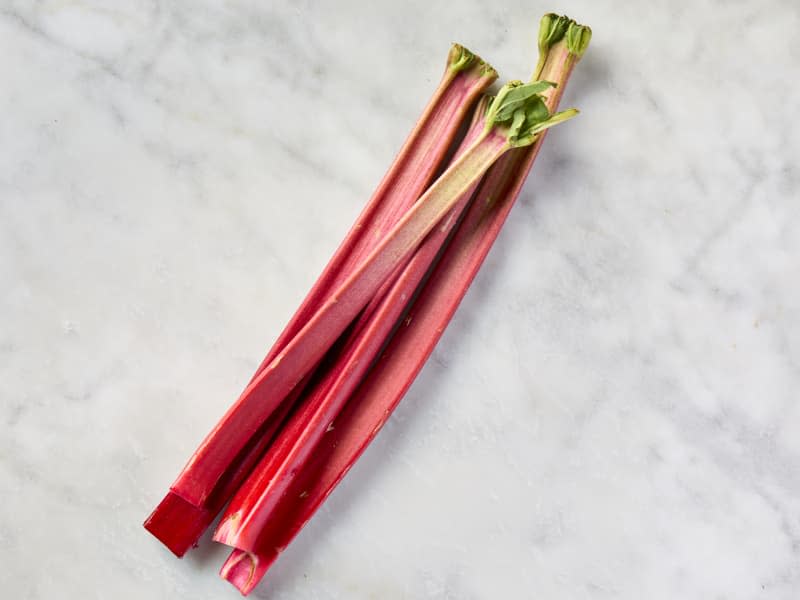
Rhubarb
Rhubarb is a long, stalky plant that looks a lot like red celery. The stalks can range in color from deep red to light pink, and even pale green. As a plant, rhubarb is a perennial related to buckwheat. In a culinary context, rhubarb refers to the plant’s stalks. The leaves of the rhubarb plant are toxic and should not be consumed, which is why rhubarb is most often sold with the leaves removed. If you purchase rhubarb with the leaves attached, remove and discard them before prepping the stalks.
You’re most likely to find rhubarb beginning in spring, though the season lasts throughout the summer months. Rhubarb has a tart flavor, which is why you’ll often see it paired with sweet fruits like strawberries or used in sweet desserts, though it can be a great ingredient in a savory pan sauce.
Storage Tip: Wrap rhubarb stalks loosely in aluminum foil and store in the refrigerator to keep them fresh for up to two weeks. For long-term storage, you can store rhubarb in the freezer.
Best for: Desserts, jam, cocktails
Rhubarb Recipes:
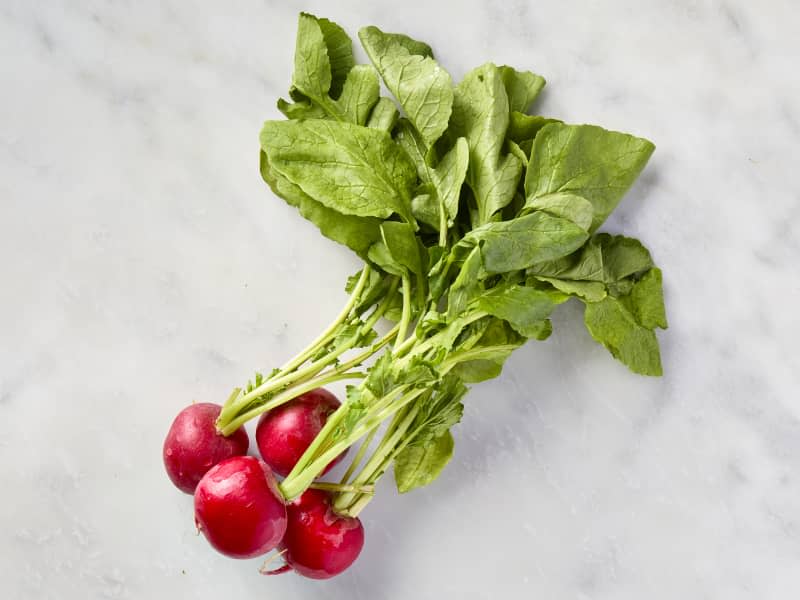
Radishes
Radishes are part of the brassica family, which includes cabbage, kale, and broccoli. They have a strong, peppery flavor that comes from the same compound found in mustard and horseradish.
There are quite a few varieties of radish including small red round radishes; the more elongated French breakfast radish, which has a milder flavor than its round cousin; daikon radish, which is white, grows much larger, and is popular in many East Asian cuisines; watermelon radishes. which are green on the outside and pink on the inside; and black radishes, which have a thick bumpy skin, a drier interior than other varieties, and a very strong flavor.
Radishes can be consumed raw or cooked and are a great addition to salads, sliced or chopped as a topping for tacos and hearty stews, or swirled into butter for radish toast.
Storage Tip: Store radishes in the refrigerator, wrapped loosely in paper towels in a zip-top plastic bag, which will keep them fresh for about a week.
Best for: Salads, toppings, toasts, roasting, braising, pickling
Radish Recipes:
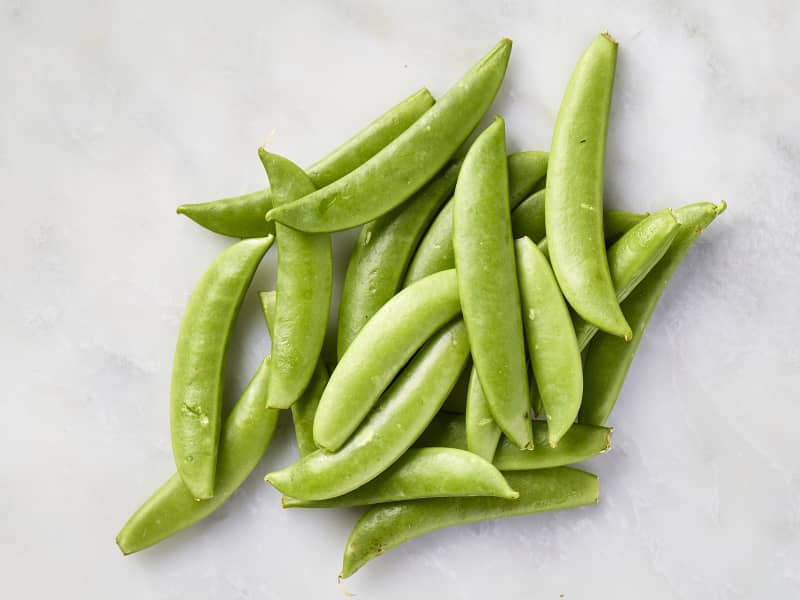
Snap Peas
Snap peas are a hybrid of English peas and snow peas. Their pods are edible so they’re consumed whole, rather than shelled like an English sweet pea. Snap peas are available year-round, but spring and summer are the best season to get them at the peak of their flavor. They can be consumed raw or cooked and are great both whole and sliced.
Storage Tip: To keep snap peas fresh for several days, store them in an open plastic bag in the refrigerator to allow air to flow around them.
Best for: Salads, stir frys, grain bowls, noodle dishes
Snap Pea Recipes:
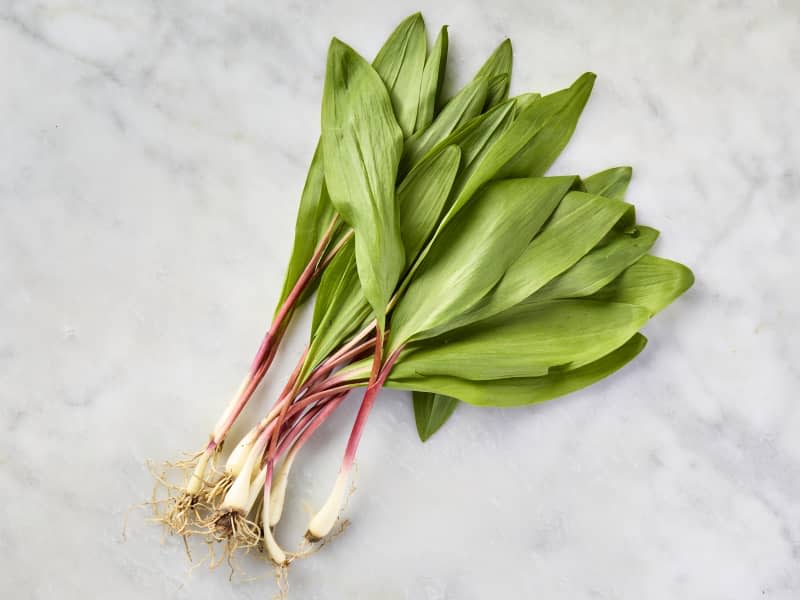
Ramps
Ramps are part of the onion family. They only grow in wooded areas where they are protected by a layer of leaves and snow throughout the winter. They sprout during a small window in the spring, and if the conditions aren’t right, they don’t sprout at all.
Due to the fact that they’re foraged and rare, they can be a bit pricey. You can find them in early spring at local farmers markets and some grocery stores. Look for ramps with long, bright green leaves and their roots still attached to narrow white bulbs.
Ramps have a mild allium flavor similar to garlic and onions. They can be grilled or sautéed whole, incorporated into pastas and frittatas, swirled into risotto, or blended into a potent pesto.
Storage Tip: Store ramps in the refrigerator for several days with the root ends wrapped in paper towels.
Best for: Grilling, pickling, pesto, pasta, risotto, egg dishes
Ramp Recipes:

